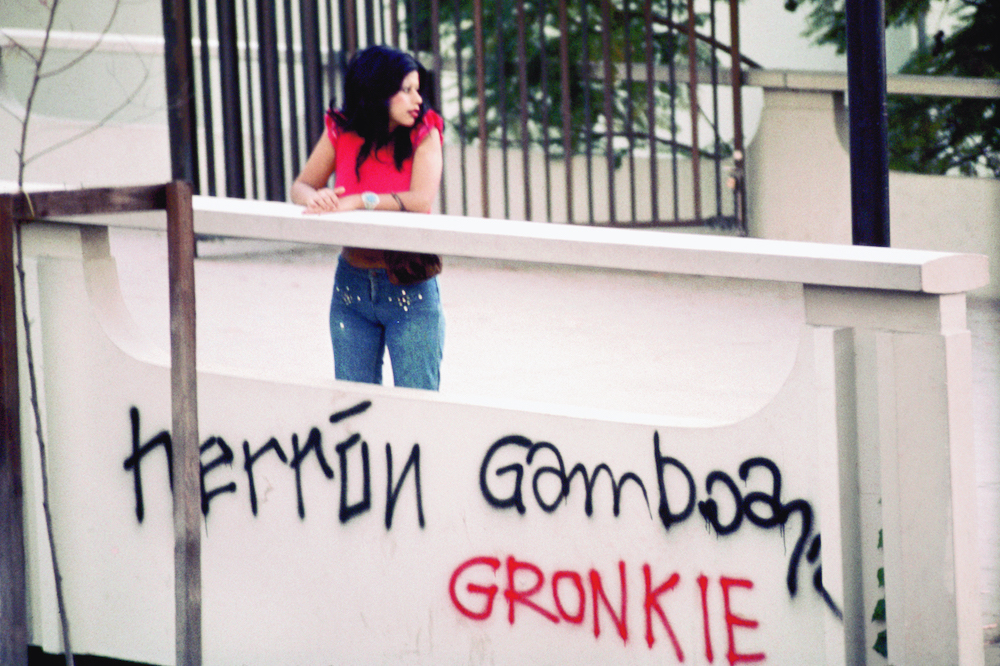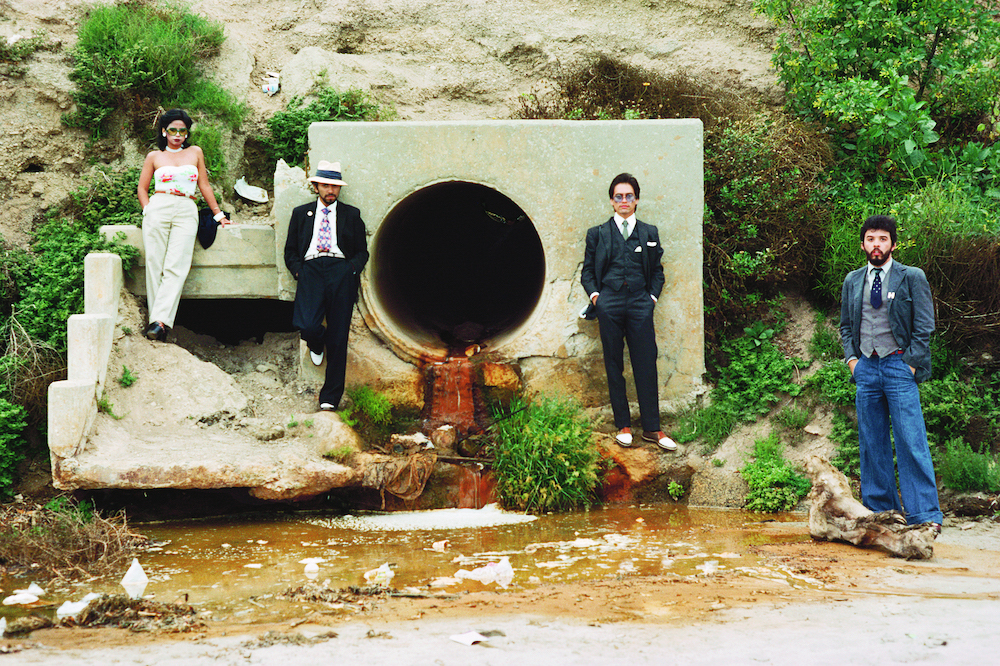The artistic legacies of Mexican Muralism remain imprinted on LA’s urban landscape, in faded residues on cracked concrete structures and sometimes peeking out from peeling layers of whitewash anti-graffiti paint. Throughout the 1970s, many artists in Southern California’s Chicano Art Movement claimed the medium of the wall as public pulpit. These murals took up the pedagogical aims of Mexican Muralism to spread the good word of socialist revolution to the masses, educate the citizenry on radical histories, and challenge the doctrine of capitalist, colonial land privatization.
In the same period, a fluid art group called ASCO (from the Spanish phrase me da asco, loosely meaning “you make me sick” or synonymous with “nausea”) reconfigured this inherited lineage to provoke stereotypes of Chicano art. ASCO experimented with Dada and Fluxus practices of spatial détournement—making the familiar unfamiliar—to make live, ephemeral art from LA’s walls, streets and cultural materials. Rejecting what they perceived as a hegemonic collectivism in the prevalent “Mexican-American Art” motifs, ASCO preferred sarcasm and playful modes of repurposing to declarative ethical pronunciations, manifestos and social realism.
Still, ASCO was emphatically political, with co-founders Gronk (aka Glugio Nicandro), Harry Gamboa Jr, Willie Herrón III, and later joining member artist Patssi Valdez—all deeply involved in the fervent Chicano student activism across East LA high schools in the 1970s. Broadening their perspectives, they cultivated an internationalist engagement with aesthetic philosophies, accessed from a homegrown, punk vantage that was self-taught out of East LA barrio public schools, rather than elite art schools. Unlike the tinges of individualism and politics-as-consumer-cosplay often associated with the punk generation, ASCO’s nod to Fluxus experimented with practices of de-individuation to provoke concepts of normative identity. ASCO juxtaposed familiar spaces and symbols with modalities of popular culture—such as mail art and home videos—to reject the era’s commodification of identity and political aesthetics.

Harry Gamboa Jr.
Spray Paint LACMA, 1972
from the Asco era
©1972, Harry Gamboa Jr.
ASCO’s playful reconfiguration of the mural form is evident in the striking group portrait Asshole Mural (1974). In it, the artists are dressed as archetypal Scarface-meets-American-Psycho 1970s assholes, with the men in three-piece ensembles while Patssi Valdez glares out at the camera from designer sunglasses. Assembled in an unyielding line across the frame, the group is poised coolly on either side of a gaping, black… hole that occupies the image’s central focus. The backdrop is an all-too familiar Los Angeles landscape; a lush, desert hillside with the cavernous excavation indicating a concrete aqueduct, linking to extractive water infrastructures of unfathomable industrial scale. This visual evocation alludes to the genocidal histories of Indigenous land dispossession and water theft that forged the way for LA’s urban development in the 20th century. The expansive networks of water extraction further imbricate the scene with ongoing labor struggles of Chicano farm workers across rural California against exploitative agricultural production.
Another of ASCO’s most famous live interventions was Spray Paint (1972), in which they responded to a racist statement by LACMA’s then-curator (who disregarded Chicano art as mere graffiti) by graffitiing their names on LACMA’s entrance, claiming the wall as their own ready-made. Though departing from more didactic methods of social realism found in traditional muralism, ASCO took up LA walls to explore themes of Chicano life, playing upon a rich tapestry of philosophical and historical influences through sardonic juxtaposition.


